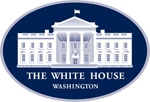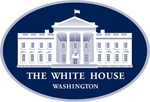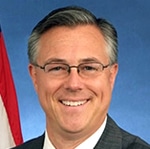 On Feb. 26, President Obama spoke at the historic Union Depot train station in St. Paul, Minn., where he launched a competition for $600 million in competitive transportation funding and outlined his vision for investing in America’s infrastructure with a $302 billion, four-year surface transportation reauthorization proposal.
On Feb. 26, President Obama spoke at the historic Union Depot train station in St. Paul, Minn., where he launched a competition for $600 million in competitive transportation funding and outlined his vision for investing in America’s infrastructure with a $302 billion, four-year surface transportation reauthorization proposal.
The president will continue to act when he can to promote job growth in the transportation sector and put more Americans back to work repairing and modernizing our roads, bridges, railways, and transit systems, and will also work with Congress to act to ensure critical transportation programs continue to be funded and do not expire later this year.
A White House Fact Sheet included the following:
Launching competition for $600 million in TIGER competitive grants to fund transformative transportation infrastructure projects. Since the President took office, America has made historic investments to improve our nation’s infrastructure –including the highly successful Transportation Investment Generating Economic Recovery (TIGER) competitive grant program that has invested $3.5 billion in 270 projects across the country. Today the President is announcing that the U.S. Department of Transportation is making available $600 million in TIGER competitive grants to fund transportation projects. The TIGER grant program, which was initially funded as part of the American Recovery and Reinvestment Act, was recently funded in the bipartisan Consolidated Appropriations Act, signed by the President on January 17th, 2014.
Proposing an aggressive four-year plan to modernize our nation’s surface transportation infrastructure. Despite progress over the last five years, there’s more work to do. Later this summer, the nation’s transportation system will be facing a funding crisis, which is why the President is committed to working with Congress, including Senators Boxer and Vitter and Representatives Shuster and Rahall, on a bipartisan solution. Today the President is outlining his vision for a comprehensive, long term plan that puts people back to work repairing our nation’s transportation infrastructure. The President will propose a four-year reauthorization of our surface transportation programs that will modernize our nation’s infrastructure and ensure the health and growth of these critical programs for the future while supporting millions of jobs.
Proposing a pro-growth, bipartisan approach to financing the President’s surface transportation plan. The President’s Budget will outline his proposal to dedicate $150 billion in one-time transition revenue from pro-growth business tax reform to address the funding crisis facing our surface transportation programs and increase infrastructure investment. This amount is sufficient to not only fill the current funding gap in the Highway Trust Fund, but increase surface transportation investment over current projected levels by nearly $90 billion over the next four years. When taking into account existing funding for surface transportation, this plan will result in a total of $302 billion being invested over four years putting people back to work modernizing our transportation infrastructure. The President is putting forward this pro-growth financing plan to encourage bipartisan efforts to support a visionary infrastructure plan, but is open to all ideas for how to achieve this important objective, and will work closely with Members of Congress of both parties on a solution that will invest in more job creating transportation projects. The President is also looking forward to working with Congress on bipartisan ideas to attract more private investment, such as a national infrastructure bank or the recent infrastructure financing authority proposal from Senators Warner and Blunt.
Launching Competition for $600 in TIGER Grants
Today, the President is announcing that the U.S. Department of Transportation is making available $600 million to fund transportation projects across the country under a sixth round of the highly successful TIGER competitive grant program. This funding and opportunity for governors, mayors, and other local leaders to partner with the Federal government is a result of the bipartisan Consolidated Appropriations Act the President signed in January and an example of what progress is possible when Washington works together across partisan lines.
Since 2009 when the President signed the American Recovery and Reinvestment Act that launched the program, the TIGER grant program has awarded $3.5 billion to 270 projects in all 50 states, the District of Columbia and Puerto Rico – including 100 projects to support rural communities. These high impact investments have improved the nation’s road, rail, transit, and port systems, and supported multi-modal projects that efficiently connect these varying types of transportation modes. Demand for TIGER funds has been overwhelming, and the quality of applications has been high. During the previous five rounds, the U.S. Department of Transportation received more than 5,300 applications requesting nearly $115 billion for transportation projects across the country.
Supporting High-Value Transportation Projects Across the Country. The highly competitive TIGER program supports a range of projects, including roads, bridges, transit, rail, and ports, and offers one of the few Federal funding sources for game-changing projects that integrate different modes of transportation. The TIGER program invests in projects that will have a significant impact on the nation or a region, and Federal funds are used to make such projects possible and leverage additional funding from private sector partners, States, local governments, metropolitan planning organizations, and transit agencies.
Encouraging Improved Job Access and Increased Economic Opportunity. In an effort to expand economic opportunities for all Americans, the 2014 TIGER program will place an emphasis on projects that support reliable, safe, and affordable transportation options that improve connections for urban, suburban, and rural communities. While continuing to support projects of all types, a priority will be placed in this 6th round of applications on projects that make it easier for Americans to get to jobs, school, and other opportunities, promote neighborhood revitalization and business expansion, and reconnect neighborhoods that are unnaturally divided by physical barriers such as highways and railroads.
Prioritizing Transformative Projects. Successful projects in the highly competitive process will be those with the potential to improve economic competitiveness and create jobs, improve the condition of existing transportation systems, improve quality of life by increasing transportation options, improve energy efficiency, reduce fuel consumption and encourage resiliency, and/or improve the safety of our transportation systems.
$35 Million to Help Communities Design Economic Development Plans. In addition to supporting capital grants, Congress provided the U.S. Department of Transportation with the flexibility to use up to $35 million of the 2014 TIGER funds for planning grants for the first time since 2010. These funds can be used to support the planning of innovative transportation solutions, as well as regional transportation planning, freight and port planning, housing and land use development, and resiliency efforts that improve efficiency and sustainable community development.
The President’s Vision for 21st Century Transportation Infrastructure
The Highway Trust Fund that provides critical funding for repairing roads, bridges, and transit systems is projected to become insolvent later this summer, and the existing surface transportation bil
l expires in September. Moreover, the current way we fund our transportation investments is insufficient to meet the nation’s transportation infrastructure needs and grow our economy.
The President is committed to working on a solution that not only avoids a near-term funding crisis, but also provides stability and meet the pent-up transportation needs to help American families and workers and businesses in rural, suburban, and urban communities across the country.
The President’s vision, which will be described in his FY2015 Budget request, will create jobs, grow our economy, attract private investment, facilitate American exports, reduce commute times and increase access to jobs, make our roads and bridges safer, cut red tape, and increase the return on investment of transportation infrastructure for American taxpayers. The President is calling for a $302 billion, four year transportation reauthorization proposal that increases and provides stable funding for our nation’s highways, bridges, transit, and rail systems. The President is proposing one way to pay for this investment, by using $150 billion in one-time transition revenue from pro-growth business tax reform, but will work closely with Congress and listen to their ideas for how to achieve this important objective.
Proposing a $302 billion, Four Year Transportation Reauthorization Bill, Providing States, Local Governments, and Construction Workers with Certainty. The President’s proposal for a $302 billion, four year transportation reauthorization will not only allow States and local units of government to effectively plan their project pipelines, supporting millions of good paying jobs over the next several years, but also will enable more transformative transportation projects that improve our global competitiveness.
$63 billion to fill the funding gap in the Highway Trust Fund. The proposal will meet our nation’s essential highway, bridge, and transit needs in the near term by providing $63 billion to address the insolvency of the Highway Trust Fund for four years.
Prioritizing “Fix-it-First” investments. The proposal will include policies and reforms to prioritize investments for much needed repairs and to improve the safety of highways and bridges, subways and bus services, with particular attention to improving roads and bridges in rural and tribal areas.
Matching Transportation Infrastructure Investments to the Current and Future Needs of American Communities. Bringing a one-time infusion of investment into our transportation infrastructure programs would enable projects that address the diverse needs of American communities today.
$206 billion to invest in our nation’s highway system and road safety. The proposal will increase the amount of highway funds by 22 percent annually, for a total of about $199 billion over the four years. The proposal would also provide more than $7 billion to improve safety for all users of our highways and roads.
$72 billion to invest in transit systems and expand transportation options. The proposal increases average transit spending by nearly 70 percent annually, for a total program of $72 billion over four years, which will enable the expansion of new projects (e.g., light rail, street cars, bus rapid transit, etc.) in suburbs, fast-growing cities, small towns, and aging rural communities, while still maintaining existing transit systems.
$19 billion in dedicated funding for rail programs. The proposal also includes nearly $5 of billion annually for high performance and passenger rail programs with a focus on improving the connections between key regional city pairs and high traffic corridors throughout the country.
$9 billion in competitive funding to spur innovation. The proposal will make permanent and provide $5 billion over four years, an increase of more than 100 percent, for the highly successfully TIGER competitive grant program and propose $4 billion of competitively awarded funding over four years to incentivize innovation and local policy reforms to encourage better performance, productivity, and cost-effectiveness in our transportation systems.
Encouraging coordination and local decision making. The proposal includes policy reforms to incentivize improved regional coordination and strengthen local decision making in allocating Federal funding so that local communities can better realize their vision for improved mobility.
Expanding Economic Growth, Jobs, and Opportunity. The President is dedicated to enhancing opportunity for all Americans and our businesses by investing in transportation projects that better connect communities to centers of employment, education, and services.
More than $2.6 billion and policy reforms to support the creation of ladders of opportunity. The proposal will include policy reforms to enhance existing highway and transit programs that help to create ladders of opportunity. Within the overall transit spending, the proposal provides $2.2 billion for a new bus rapid transit program for rapidly growing regions. It also includes $400 million to enhance the size, diversity, and skills of our nation’s construction workforce, while providing support for local hiring efforts and encouraging States to use their On-the-Job training funds more effectively.
$10 billion for a new freight program to strengthening America’s exports and trade. Recognizing the importance of efficient and reliable freight networks to support trade and economic growth, the President’s proposal will also create a new $10 billion multimodal freight grant program – in partnership with State and local officials and private sector and labor representatives – for rail, highway, and port projects that address the greatest needs for the efficient movement of goods across the country and abroad.
More Bang-for-the-Buck by Boosting Efficiency and Taxpayers Return on Our Transportation Investments. In a time of tight fiscal and budgetary constraints, the President’s proposal includes a number of measures to ensure that the American public is getting most out of Federal transportation infrastructure investments that lead to better outcomes for all Americans.
Improving project delivery and the Federal permitting and regulatory review process. The proposal will further advance and introduce new reforms to the project delivery system through a range of activities that institutionalize best practices and insights from the President’s previous Executive Orders and Presidential Memorandums to cut project timelines in half for major infrastructure projects by modernizing the Federal government’s infrastructure permitting and regulatory review process.
Building more resilient communities. Building on the Sandy Task Force recommendations, the proposal will also encourage more resilient designs for highway, transit, and rail infrastructure, and smarter transportation planning to reduce fuel use and conserve energy.
Encouraging and incentivizing cost effective investments. The proposal will strengthen the performance incentives to maintain safety and conditions of good repair, and expand research and technology activities in order to improve the productivity of our transportation systems, thereby increasing taxpayer return on investment.
$4 billion to attract private investment in transportation infrastructure. The proposal calls for continued funding of $1 billion in annual credit subsidy for the successful TIFIA loan program that, similar to other Administration proposals such as capitalizing a National Infrastructure Bank, creating American Fast Forward bonds, or enacting Foreign Investment in Real Property Tax Act (FIRPTA) reforms, will facilitate increased private investment in transportation infrastructure while protecting taxpayer interests.
 President Obama March 31 vetoed a Republican effort to overturn controversial union voting rules.
President Obama March 31 vetoed a Republican effort to overturn controversial union voting rules. On Feb. 26, President Obama spoke at the historic Union Depot train station in St. Paul, Minn., where he launched a competition for $600 million in competitive transportation funding and outlined his vision for investing in America’s infrastructure with a $302 billion, four-year surface transportation reauthorization proposal.
On Feb. 26, President Obama spoke at the historic Union Depot train station in St. Paul, Minn., where he launched a competition for $600 million in competitive transportation funding and outlined his vision for investing in America’s infrastructure with a $302 billion, four-year surface transportation reauthorization proposal.